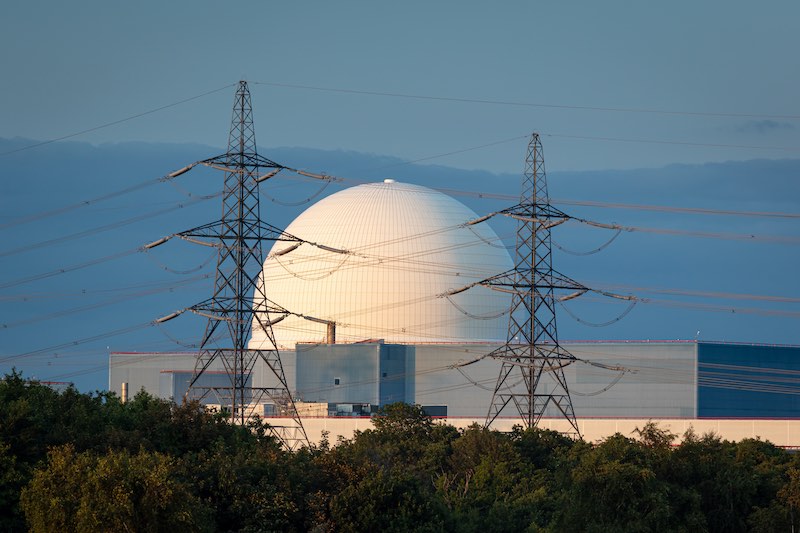Sizewell B Nuclear Power Station Returns to Full Power

Sizewell B has returned to its full 1.2GW capacity, to meet recovering electricity demand in the UK.
One reactor of the Suffolk-based power station was switched off in May following a deal between owner EDF and National Grid Electricity System Operator (ESO). That agreement was extended in August to 24 September.
The deal to halve Sizewell B’s output was signed after power demand collapsed by a fifth this spring due to coronavirus restrictions and National Grid scrambled to ensure supply didn’t outpace demand and cause blackouts. At full capacity, Sizewell B can produce just under 3% of the UK’s electricity.
The sidelining of Sizewell B and simultaneous maintenance outages at Dungeness B, Hinkley Point B and Hunterson B pushed nuclear generation to its lowest level since 2010 during the second quarter of the year and down 9.2% from the spring of 2019.
But as the lockdown has thawed and energy demand recovered, Sizewell B’s contribution was required again and Reactor 1 came back online on Friday 25 September.
National Grid figures show that power demand had returned to around 30GW by August, closer to normal and aligning better with the ESO’s predictions.
Matt Sykes, managing director for EDF’s Generation business, said: “We are pleased to have Sizewell B power station back at full power and playing its important role to help Britain achieve net zero.
“It’s not normally desirable to reduce such a major source of low carbon power but these are exceptional times and we were pleased to be able to help National Grid ESO deal with the challenges of system stability.”
EDF reportedly received payments of between £55 and £73 million for keeping the reactor offline this summer, adding to the £718 million the ESO spent balancing the grid between March and August, 40% more than usual.
These constraint payments are usually directed at flexible wind farms, which can disconnect more quickly than fossil fuel and nuclear power stations. However, Sizewell B, the UK’s youngest active nuclear plant, online since 1995, uses a different technology which allows it to be powered down more easily.
Energy market regulator Ofgem has launched an investigation into these high balancing costs, eager to learn lessons that will help the UK balance its electricity grid as it becomes more dependent on intermittent renewables.
In August, EDF also announced it would bring its North Ayrshire nuclear power station Hunterston B back online for the first time since 2018 when cracks were detected in its graphic reactor cores. The plant has been judged safe to operate by EDF and the Office for Nuclear Regulation (ONR) and will contribute electricity to the grid for the next few months and then be decommissioned before January 2022.
Meanwhile, in June the French energy company submitted plans for a new nuclear power station on the Sizewell site. Sizewell C will have capacity of 3.2GW and be capable of meeting 7% of the country's electricity needs.
Read on our blog

With the government poised to implement tough new measures to...

Budget broadband provider TalkTalk has been notifying customers via email...

A year-long investigation by charity Citizens Advice has revealed a...

Education Secretary Nadhim Zahawi has announced a new commitment to...
